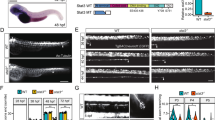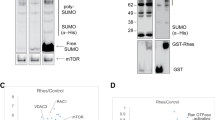Abstract
Examination of the cytoskeleton has demonstrated the pivotal role of regulatory proteins governing cytoskeletal dynamics. Most work has focused on cell cycle and cell migration regarding cancer. However, these studies have yielded tremendous insight for development, particularly in the nervous system where all major cell types remodel their shape, generate unsurpassed quantities of membranes and extend cellular processes to communicate, and regulate the activities of other cells. Herein, we analyze two microtubule regulatory alpha-tubulin deacetylases, histone deacetylase-6 (HDAC6) and SirT2. HDAC6 is expressed by most neurons but is abundant in cerebellar Purkinje cells. In contrast, SirT2 is targeted to myelin sheaths. Expression of these proteins by post-mitotic cells indicates novel functions, such as process outgrowth and membrane remodeling. In oligodendrocytes, targeting of SirT2 to paranodes coincides with the presence of the microtubule-destabilizing protein stathmin-1 during early myelinogenesis and suggests the existence of a microtubule regulatory network that modulates cytoskeletal dynamics.






Similar content being viewed by others
References
Knobler RL, Stempak JG, Laurencin M (1974) Oligodendroglial ensheathment of axons during myelination in the developing rat central nervous system. A serial section electron microscopical study. J Ultrastruct Res 49(1):34–49
Xin M, Yue T, Ma Z, Wu FF, Gow A, Lu QR (2005) Myelinogenesis and axonal recognition by oligodendrocytes in brain are uncoupled in Olig1-null mice. J Neurosci 25(6):1354–1365
Southwood C, He C, Garbern J, Kamholz J, Arroyo E, Gow A (2004) CNS myelin paranodes require Nkx6-2 homeoprotein transcriptional activity for normal structure. J Neurosci 24(50):11215–11225
Suter U, Scherer SS (2003) Disease mechanisms in inherited neuropathies. Nat Rev Neurosci 4(9):714–726
Salzer JL (2003) Polarized domains of myelinated axons. Neuron 40(2):297–318
Bhat MA (2003) Molecular organization of axo-glial junctions. Curr Opin Neurobiol 13(5):552–559
Ozon S, Guichet A, Gavet O, Roth S, Sobel A (2002) Drosophila stathmin: a microtubule-destabilizing factor involved in nervous system formation. Mol Biol Cell 13(2):698–710
Andersen SS (2000) Spindle assembly and the art of regulating microtubule dynamics by MAPs and Stathmin/Op18. Trends Cell Biol 10(7):261–267
Liedtke W, Leman EE, Fyffe RE, Raine CS, Schubart UK (2002) Stathmin-deficient mice develop an age-dependent axonopathy of the central and peripheral nervous systems. Am J Pathol 160(2):469–480
Dryden SC, Nahhas FA, Nowak JE, Goustin AS, Tainsky MA (2003) Role for human SIRT2 NAD-dependent deacetylase activity in control of mitotic exit in the cell cycle. Mol Cell Biol 23(9):3173–3185
North BJ, Marshall BL, Borra MT, Denu JM, Verdin E (2003) The human Sir2 ortholog, SIRT2, is an NAD+-dependent tubulin deacetylase. Mol Cell 11(2):437–444
Hubbert C, Guardiola A, Shao R, Kawaguchi Y, Ito A, Nixon A, Yoshida M, Wang XF, Yao TP (2002) HDAC6 is a microtubule-associated deacetylase. Nature 417(6887):455–458
Frye RA (1999) Characterization of five human cDNAs with homology to the yeast SIR2 gene: Sir2-like proteins (sirtuins) metabolize NAD and may have protein ADP-ribosyltransferase activity. Biochem Biophys Res Commun 260(1):273–279
Yamamura T, Konola JT, Wekerle H, Lees MB (1991) Monoclonal antibodies against myelin proteolipid protein: identification and characterization of two major determinants. J Neurochem 57:1671–1680
Bhat MA, Rios JC, Lu Y, Garcia-Fresco GP, Ching W, Martin MS, Li J, Einheber S, Chesler M, Rosenbluth J, Salzer JL, Bellen HJ (2001) Axon-glia interactions and the domain organization of myelinated axons requires neurexin iv/caspr/paranodin. Neuron 30(2):369–383
Gow A, Davies C, Southwood CM, Frolenkov G, Chrustowski M, Ng L, Yamauchi D, Marcus DM, Kachar B (2004) Deafness in Claudin 11-null mice reveals the critical contribution of basal cell tight junctions to stria vascularis function. J Neurosci 24(32):7051–7062
Chirgwin JM, Przybyla AE, MacDonald RJ, Rutter WJ (1979) Isolation of biologically active ribonucleic acid from sources enriched in ribonuclease. Biochemistry 18(24):5294–5299
Sambrook J, Fritsch EF, Maniatis T (1989) Molecular cloning. A laboratory manual. Cold Spring Harbor Press, New York
Laemmli UK (1970) Cleavage of structural proteins during the assembly of the head of bacteriophage T4. Nature 227:680–685
Sorg BA, Smith MM, Campagnoni AT (1987) Developmental expression of the myelin proteolipid protein and basic protein mRNAs in normal and dysmyelinating mutant mice. J Neurochem 49(4):1146–1154
Glozak MA, Sengupta N, Zhang X, Seto E (2005) Acetylation and deacetylation of non-histone proteins. Gene 363:15–23
Zhang Y, Li N, Caron C, Matthias G, Hess D, Khochbin S, Matthias P (2003) HDAC-6 interacts with and deacetylates tubulin and microtubules in vivo. Embo J 22(5):1168–1179
Song J, Goetz BD, Baas PW, Duncan ID (2001) Cytoskeletal reorganization during the formation of oligodendrocyte processes and branches. Mol Cell Neurosci 17(4):624–636
Westermann S, Weber K (2003) Post-translational modifications regulate microtubule function. Nat Rev Mol Cell Biol 4(12):938–947
Tanner KG, Landry J, Sternglanz R, Denu JM (2000) Silent information regulator 2 family of NAD-dependent histone/protein deacetylases generates a unique product, 1-O-acetyl-ADP-ribose. Proc Natl Acad Sci USA 97(26):14178–14182
Bedalov A, Simon JA (2003) Sir2 flexes its muscle. Dev Cell 5(2):188–189
Fulco M, Schiltz RL, Iezzi S, King MT, Zhao P, Kashiwaya Y, Hoffman E, Veech RL, Sartorelli V (2003) Sir2 regulates skeletal muscle differentiation as a potential sensor of the redox state. Mol Cell 12(1):51–62
Acknowledgments
This work was supported by grants to A.G. from NINDS, NIH (NS43783) and the National Multiple Sclerosis Society (RG2891).
Author information
Authors and Affiliations
Corresponding author
Additional information
Special issue dedicated to Dr. Anthony Campagnoni.
Rights and permissions
About this article
Cite this article
Southwood, C.M., Peppi, M., Dryden, S. et al. Microtubule Deacetylases, SirT2 and HDAC6, in the Nervous System. Neurochem Res 32, 187–195 (2007). https://doi.org/10.1007/s11064-006-9127-6
Accepted:
Published:
Issue Date:
DOI: https://doi.org/10.1007/s11064-006-9127-6




